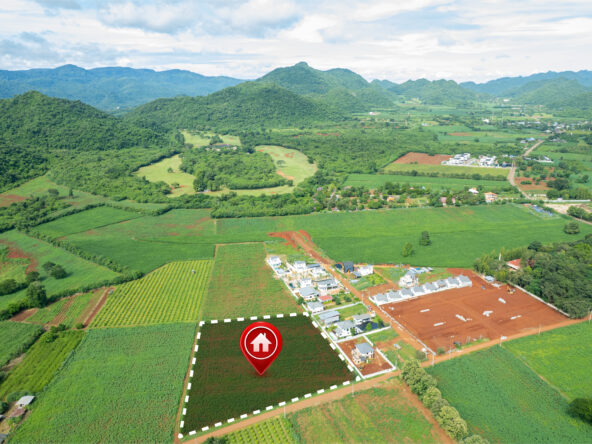Sustainable agriculture has emerged as a critical component of responsible land management, promoting ecological balance, economic viability, and long-term productivity. In this blog post, we will explore the nexus between sustainable agriculture practices and enhanced returns on land investments. By delving into the fundamentals of sustainable agriculture, the economic benefits it offers, and successful case studies, we aim to provide a comprehensive understanding of how embracing sustainability can yield positive outcomes for both the environment and investors.
The Fundamentals of Sustainable Agriculture
Sustainable agriculture is rooted in principles that prioritize environmental stewardship, social responsibility, and economic profitability. At its core, sustainable farming seeks to maintain and enhance the health of ecosystems while producing high-quality crops. The key components of sustainable agriculture include soil health, water conservation, biodiversity, and crop rotation.
Soil health is a cornerstone of sustainable farming practices. Farmers adopting sustainable methods prioritize practices such as cover cropping and no-till farming to enhance soil fertility and structure. These practices not only improve crop yields but also contribute to the long-term health and resilience of the land.
Water conservation is another critical aspect of sustainable agriculture. Efficient irrigation methods, rainwater harvesting, and the use of drought-resistant crop varieties help in optimizing water usage, mitigating the impact of water scarcity, and ensuring the sustainability of agricultural practices.
Biodiversity plays a pivotal role in sustainable agriculture. By fostering diverse ecosystems on and around farms, farmers can implement integrated pest management strategies, harnessing the power of natural predators to control pests. Crop diversification further contributes to resilience and stability in the face of changing environmental conditions.
Economic Benefits of Sustainable Agriculture
The economic advantages of sustainable agriculture are multifaceted and contribute to the long-term success of land investments. One of the primary benefits is the potential for increased crop yields and enhanced productivity over time. By prioritizing soil health and efficient resource management, sustainable farming practices create conditions conducive to higher and more consistent yields.
Cost savings are another significant economic benefit. Sustainable agriculture often involves reduced dependence on chemical inputs, leading to lower production costs. Organic farming practices, for example, eliminate synthetic pesticides and fertilizers, resulting in not only cost savings but also a premium market for organic produce.
Market demand for sustainably produced crops has seen a notable increase in recent years. Consumers are increasingly conscious of the environmental and social impact of their food choices. This shift in consumer behavior has created opportunities for farmers practicing sustainable agriculture to access niche markets and command premium prices for their products.
Enhancing Soil Health for Long-Term Returns
Maintaining soil health is essential for the sustainability and profitability of agriculture. Cover cropping, a practice where cover crops are grown during periods when the main crop is not present, is a key strategy for enhancing soil fertility. These cover crops help prevent erosion, suppress weeds, and add organic matter to the soil, improving its structure and nutrient content.
No-till farming, another sustainable practice, involves minimal soil disturbance. By avoiding traditional plowing, farmers can preserve soil structure and reduce the risk of erosion. This not only benefits the immediate crop but also contributes to the long-term health of the land.
Crop rotation is a time-honored practice that involves growing different crops in sequential seasons on the same piece of land. This not only helps break pest and disease cycles but also enhances soil fertility by varying nutrient demands across different crops. Crop rotation is a proven strategy for maintaining the long-term productivity of agricultural land.
Water Conservation Strategies
Efficient water management is crucial for sustainable agriculture, especially in regions facing water scarcity. Farmers can adopt various water conservation strategies to optimize water usage and minimize environmental impact.
One of the key methods is the use of efficient irrigation systems, such as drip irrigation and precision irrigation. These technologies deliver water directly to the root zone of plants, reducing water wastage and ensuring that crops receive the precise amount of water they need.
Rainwater harvesting is another effective strategy for water conservation. By collecting rainwater during periods of ample rainfall, farmers can store water for later use, mitigating the impact of dry spells. This practice also contributes to reduced dependence on external water sources.
The cultivation of drought-resistant crop varieties is an innovative approach to water conservation. These crops are genetically adapted to thrive in arid conditions, requiring less water to produce satisfactory yields. By incorporating drought-resistant varieties into their crop rotations, farmers can enhance the resilience of their agricultural systems to changing climate patterns.
Biodiversity and Its Role in Sustainable Agriculture
Biodiversity is a key pillar of sustainable agriculture, supporting ecological balance and resilience in farming systems. By promoting diverse ecosystems, farmers can harness the power of natural processes to enhance the sustainability of their operations.
Integrated pest management (IPM) is an approach that leverages biodiversity to control pests. Instead of relying solely on chemical pesticides, farmers practicing IPM introduce natural predators and beneficial organisms that prey on harmful pests. This not only reduces the need for synthetic chemicals but also helps maintain a balanced and healthy ecosystem.
Crop diversification is another strategy to enhance biodiversity on farms. Instead of monoculture, where a single crop is cultivated over a large area, farmers can diversify their crops to create a more resilient and stable agricultural system. Diverse crops provide different habitats for various organisms, contributing to overall ecosystem health.
Organic Farming Practices
Organic farming represents a holistic approach to sustainable agriculture, emphasizing the elimination of synthetic inputs and the promotion of natural processes. The adoption of organic practices has gained traction globally, driven by consumer demand for food produced without synthetic pesticides and fertilizers.
Eliminating synthetic pesticides and fertilizers is a fundamental aspect of organic farming. Instead, organic farmers rely on natural methods of pest control, such as introducing beneficial insects or using companion planting to repel pests. Organic fertilizers, such as compost and manure, are used to nourish the soil and enhance its fertility.
Certification plays a crucial role in the organic farming sector. Farmers who adhere to organic practices can obtain certification, providing consumers with assurance that the products meet established organic standards. This certification not only opens up premium markets for organic produce but also contributes to the overall credibility and trustworthiness of the organic farming sector.
Building a Regenerative Agricultural System
Regenerative agriculture takes sustainable farming to the next level by focusing on rebuilding and restoring the health of ecosystems. It goes beyond minimizing environmental impact and aims to actively contribute to ecosystem regeneration and resilience.
Key principles of regenerative agriculture include:
- Carbon Sequestration: Practices that enhance the capture and storage of carbon in the soil, such as cover cropping and agroforestry.
- Soil Health: Prioritizing practices that improve soil structure, fertility, and microbial activity, such as no-till farming and the use of organic amendments.
- Biodiversity: Actively promoting diverse ecosystems on and around farms to support a wide range of plant and animal species.
- Water Management: Implementing strategies to optimize water usage, reduce runoff, and enhance water retention in the soil.
- Community Engagement: Fostering collaboration with local communities to build resilient and sustainable food systems.




